Astorino Re-Elected and Boykin Triumphs Over Flisser
- Details
- Hits: 4606
 After a fierce campaign County Executive Rob Astorino won a second term to lead Westchester, defeating New Rochelle Mayor Noam Bramson by a margin of 10%. With 81% of the vote reported, the Westchester County Board of Elections shows Astorino with 76,088 votes, leading Bramson by 55% to 45%. Despite the fact that Democrats outnumber Republicans by a margin of two-to-one in the County, the Republican County Executive soundly defeated his Democratic opponent.
After a fierce campaign County Executive Rob Astorino won a second term to lead Westchester, defeating New Rochelle Mayor Noam Bramson by a margin of 10%. With 81% of the vote reported, the Westchester County Board of Elections shows Astorino with 76,088 votes, leading Bramson by 55% to 45%. Despite the fact that Democrats outnumber Republicans by a margin of two-to-one in the County, the Republican County Executive soundly defeated his Democratic opponent.
In his victory speech on Tuesday night, Astorino called for fiscal responsibility, an issue that resounded with voters who pay the highest county taxes in the country. He said, "The days of unrestricted tax and spend have to end. We are hemorrhaging jobs to other parts of the country. That will only stop when we get a grip on over spending and over taxing. We have reduced the county tax levy and added 27,000 jobs in the county. Westchester is open for business."
Conceding defeat, Bramson said, "I'm too old to cry, and it hurts too much to laugh ..... Running against a well-liked and well financed incumbent is a tough challenge." He told the group that he "will return to a job (he) love(s) ... serving the people of New Rochelle." He added, "The regret I feel is not for myself. I regret that I was not able to bring home a victory and make a difference for all of the people of our county. Our values do not rise and fall on one victory, or one defeat – they endure for every season and every debate."
is a tough challenge." He told the group that he "will return to a job (he) love(s) ... serving the people of New Rochelle." He added, "The regret I feel is not for myself. I regret that I was not able to bring home a victory and make a difference for all of the people of our county. Our values do not rise and fall on one victory, or one defeat – they endure for every season and every debate."
The key issues in the campaign were taxes, the affordable housing settlement and to a lesser extent social issues such as gun control and abortion rights. With many questioning the role of county government, Astorino's ability to cut the size of the government and mandate county employees to contribute to their health care costs in his first term may have swayed voters to give him a second term. The Bramson campaign blamed Astorino for losing $7.4 miillion in HUD Community Block Development Grants as punishment for failing to comply with the terms of the Affordable Housing Settlement. Yet fears over federal challenges to local zoning code appear to have trumped concerns about the loss of federal funding.
Democrat Andy Spano, who held the job of Westchester County Executive for twelve years, from 1998 – 2010, widely expanded the scope of county government and perhaps voters feared that another Democrat would fund increases in social services resulting in even higher taxes.
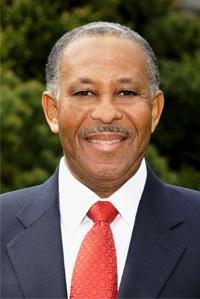 In the race for County Legislator for District 5, White Plains Councilman Ben Boykin scored a big win over former Scarsdale Mayor Miriam Levitt-Flisser. Running on the Republican ticket, Flisser failed to benefit from County Executive Astorino's popularity and received only 39% of the 9,642 votes cast to Boykin's 5,846. A known quantity in White Plains, Boykin may have benefitted from voters in White Plains, who outnumber Scarsdale voters and cast approximately 8,534 total votes (as of Wednesday morning 11/5). Flisser may also have been one of the last victims of Hurricane Sandy as many in Scarsdale were unhappy after the storm left Scarsdale without power for up to 13 days and attributed some of their suffering at the time to the Mayor.
In the race for County Legislator for District 5, White Plains Councilman Ben Boykin scored a big win over former Scarsdale Mayor Miriam Levitt-Flisser. Running on the Republican ticket, Flisser failed to benefit from County Executive Astorino's popularity and received only 39% of the 9,642 votes cast to Boykin's 5,846. A known quantity in White Plains, Boykin may have benefitted from voters in White Plains, who outnumber Scarsdale voters and cast approximately 8,534 total votes (as of Wednesday morning 11/5). Flisser may also have been one of the last victims of Hurricane Sandy as many in Scarsdale were unhappy after the storm left Scarsdale without power for up to 13 days and attributed some of their suffering at the time to the Mayor.
Following the good news, Boykin sent Scarsdale10583 the following: "I want to thank the voters of Scarsdale, White Plains and West Harrison for electing me to serve as your next County Legislator. This is our victory. We won because we focused on and discussed the issues that are important to residents of District 5. We have an outstanding team of supporters who worked to ensure our victory. I am excited to represent and work for each of you as your County Legislator."
Commenting on the election, Scarsdale's David Brodsky said, "Whether you were a supporter of Astorino, Bramson, Boykin or Flisser, you had to be impressed by the sophisticated ballot-splitting skills of the voters in our area of Southern Westchester. To have about 16% of the voters first choose Astorino, a Republican, and then go down the ballot and choose Boykin, a Democrat running against Republican Miriam Levitt-Flisser, is rare, indeed. What it means is probably too hard to discern yet without a detailed Scarsdale and White Plains vote breakdown but at the very least it reflects that Astorino was able to overcome the disadvantage of registered Democrats outnumbering Republicans, reflecting a bipartisan appeal that was hard to foresee."
The Scarsdale vote tally is not available as yet as the voting machines were impounded after the vote. According to Scarsdale Village Clerk Donna Conkling, "An Order was issued yesterday by the Honorable Lewis J. Lubell, Supreme Court of the State of New York, County of Westchester, relating to the General Election for the office of Supreme Court Justice for the 9th Judicial District. The voting machines and ballots were impounded in Westchester County, as well as Dutchess, Putnam, Rockland and Orange Counties. The Westchester County BOE was not able to give me a breakdown of the votes cast for each candidate in Scarsdale as they had not yet received our voting machines back to their facility. Although you see that there is a tally on their website for the elections that were held, you will notice that they do not break down the numbers in each Town for County Executive, for example, but only the races for each Town or City's local elections."
When the Scarsdale numbers are released we will provide an analysis of how you voted.
What is your interpretation of the election results? Post your comments below.
Boykin and Flisser Meet at LWVS Candidates' Forum
- Details
- Written by: Joanne Wallenstein
- Hits: 3120
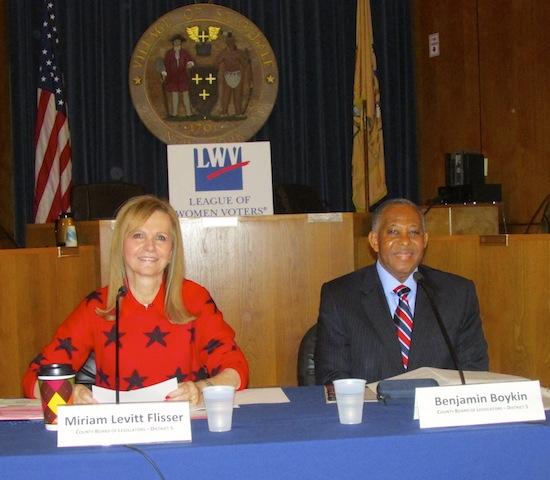 Former Scarsdale Mayor Miriam Flisser sparred with White Plains Councilman Ben Boykin at the League of Women Voters of Scarsdale Candidates' Forum at Scarsdale Village Hall on October 24. The two are vying to win a seat on the Westchester County Legislature to represent District 5 which includes Scarsdale, most of White Plains and a portion of Harrison.
Former Scarsdale Mayor Miriam Flisser sparred with White Plains Councilman Ben Boykin at the League of Women Voters of Scarsdale Candidates' Forum at Scarsdale Village Hall on October 24. The two are vying to win a seat on the Westchester County Legislature to represent District 5 which includes Scarsdale, most of White Plains and a portion of Harrison.
Both candidates emphasized past achievements in public service and their professional careers to demonstrate their abilities to work with others and get things done. As a former Village Trustee and Mayor of Scarsdale, Flisser recounted some of the initiatives that were implemented during her tenure including the Fox Meadow Stormwater Improvement Project at George Field and Cooper Green, the emergency notification system at Village Hall, leaf mulching, a new generator law and the tax revaluation that is now in process. Dr. Flisser, who is a pediatrician, cited her experience working with parents and children to come up with practical solutions to health issues.
Boykin touted his educational resume, professional record and tenure as a White Plains Councilman. The former Assistant Treasurer of Nabisco, Boykin claimed to have a facility with budgeting and cost control and vowed to keep County taxes low while tackling flooding and infrastructure issues. He referenced the development of downtown White Plains including the construction of The Ritz Carleton, City Center and The Source (site of Whole Foods) as examples of his ability to work with community and business leaders to revitalize the downtown area.
When asked to identify the three main issues affecting the county, both Boykin and Flisser discussed issues specific to Scarsdale.
Boykins three top priorities were:
- Holding down property taxes
- County funding for flood remediation
- Infrastructure and transportation issues
Flisser used this opportunity to warn voters against the threat to the Village posed by the Affordable Housing Settlement and said, "the most important issue is to maintain our Village in a Park ..... the federal system is not serving Scarsdale."
The candidates diverged on their views on the Affordable Housing Settlement and it's possible effects on Scarsdale. Flisser read quotes from letters sent from HUD to Scarsdale Village during her term as Mayor, referring to a study from Rutgers University that called for 160 units of affordable housing to be built in Scarsdale. Boykin responded by saying that the study had not been adopted and claimed that the settlement posed no threat to Scarsdale. He repeatedly stated that "New York State is a home rule state. Only a local municipality can change their zoning code. Scarsdale is 98% built out and there is no room for additional development. It is a matter of sitting down, communicating and collaborating"
According to Boykin, the HUD Monitor has now identified seven Westchester communities with "exclusionary zoning practices" and asked them to address how they will overcome these impediments to Fair and Affordable Housing. On the list are Pelham Manor, Mamaroneck, Harrison, Croton, Ossining, Pound Ridge and Lewisboro. Boykin contends that the issues could be worked out through collaboration with the Federal Monitor and criticized the Republicans for using "fear mongering and scare tactics" to make voters believe that the county would sue local municipalities to force changes in zoning codes and build multi-family homes in areas now zoned for single-family housing.
In her rebuttal to Boykin's claims, Flisser responded, "It is naïve to think the State and Federal governments will not interfere. These seven communities are having their zoning law scrutinized. Why do we need a monitor? Is this high school?"
Questions were posed from the audience, Most audience members appeared to have been asked to attend by members of the candidate's constituencies. More discussion followed on flooding, the County Charter Commission, bonding to pay for operating expenses (both were against bonding for anything but long-term capitol projects), increases in daycare costs and Rye Playland.
In closing remarks, Boykin said, "I am ready to serve you now. I don't have a learning curve. I know how to build consensus and I understand the issues faced by us at the local level.... flooding, infrastructure and quality of life."
Flisser said, "I have served thousands. I have deep experience and will serve your needs and keep taxes down. I support job growth and local zoning control. I came to this country from war-torn Europe and winning the election and serving you will allow me to express by gratitude."
Election Day is Tuesday November 5. Polls are open from 6 am to 9 pm. For more information visit vote411.org. (Photo credit Nan Berke)
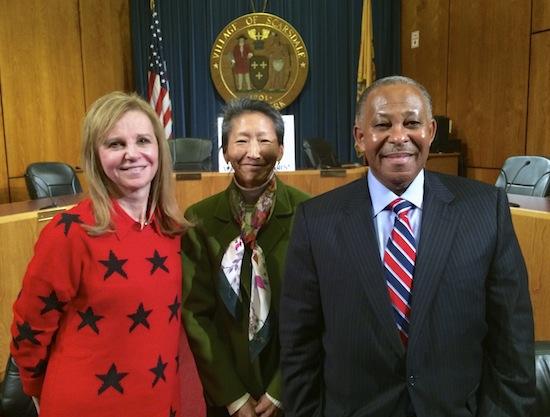
Announcing the Winners of the 2013 Halloween Window Painting Contest in Scarsdale
- Details
- Hits: 7014
 The Scarsdale Recreation Department estimates that 645 people participated in the annual Halloween Window Painting contest – which is no small feat for the recreation department staff and parents to organize. Thankfully the weather was ideal for painting and the sunny, dry conditions made for great results. Due to the simultaneous scheduling of the Scarsdale Concours d'Elegance, a vintage car show in downtown Scarsdale, painters were located on Weaver Street, Palmer Avenue and the Golden Horseshoe Shopping Center – but according to Dan Walczewski at the Recreation Department everything ran well and there were few complaints.
The Scarsdale Recreation Department estimates that 645 people participated in the annual Halloween Window Painting contest – which is no small feat for the recreation department staff and parents to organize. Thankfully the weather was ideal for painting and the sunny, dry conditions made for great results. Due to the simultaneous scheduling of the Scarsdale Concours d'Elegance, a vintage car show in downtown Scarsdale, painters were located on Weaver Street, Palmer Avenue and the Golden Horseshoe Shopping Center – but according to Dan Walczewski at the Recreation Department everything ran well and there were few complaints.
Participants included 157 individual entries, 124 team entries and 120 parent/child collaborations.
The Grand Prize was awarded to Kathleen Kantor who is a sophomore at Scarsdale High School for her painting pictured at left that shows a unicorn with a candy corn horn. See the real thing at Lange's Deli in Scarsdale.
The award ceremony will take place on Thursday November 7 at 7:30 pm at the Quaker Ridge School auditorium. Congratulations to all the participants.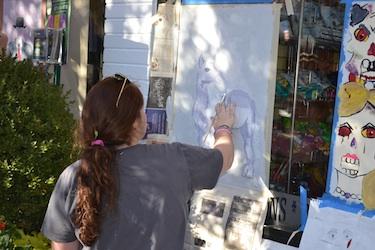
See the list of winners and their creations below:
Group 1


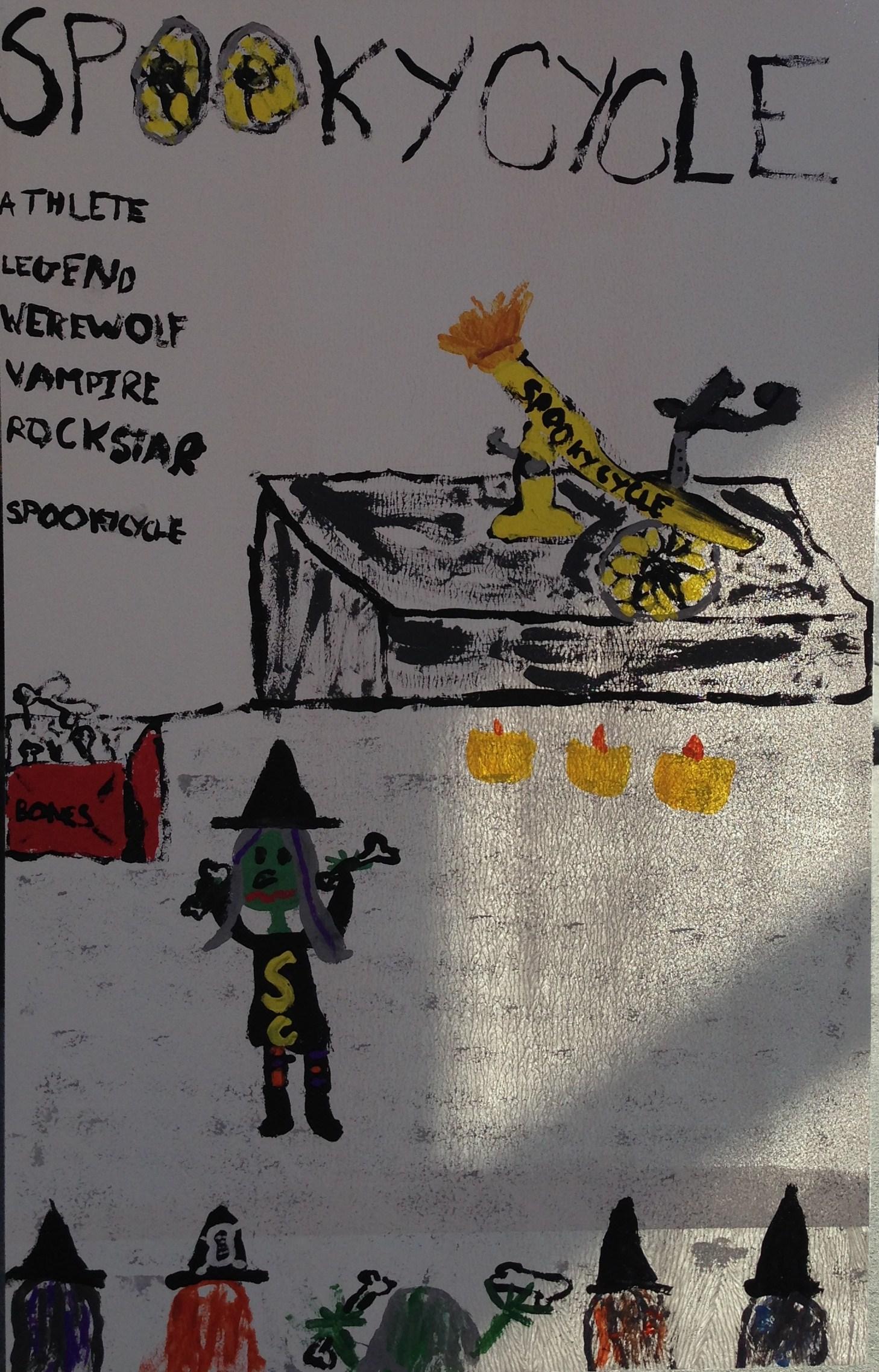
Group 2
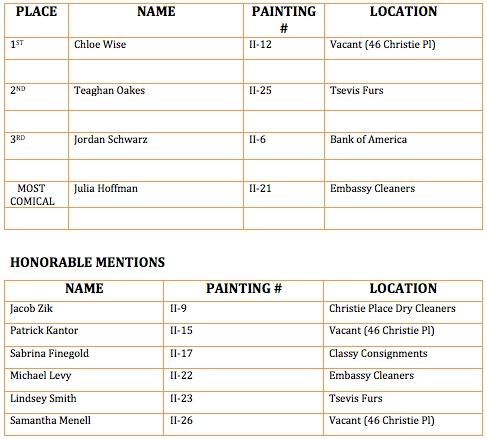
Group 3
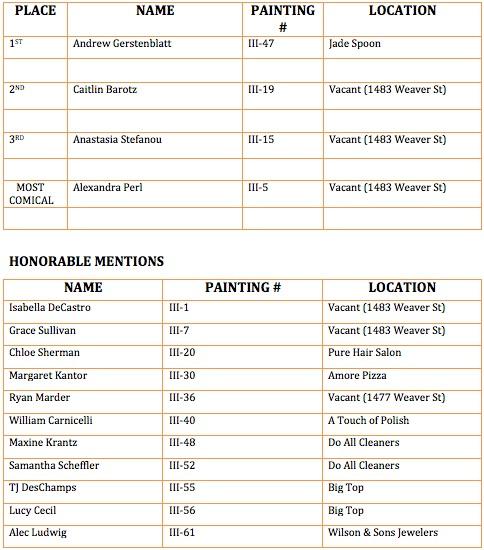
Group 4
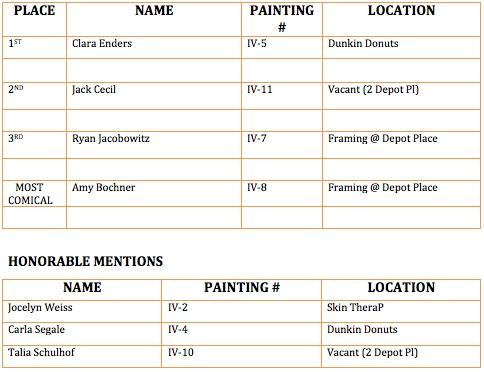
Group 5
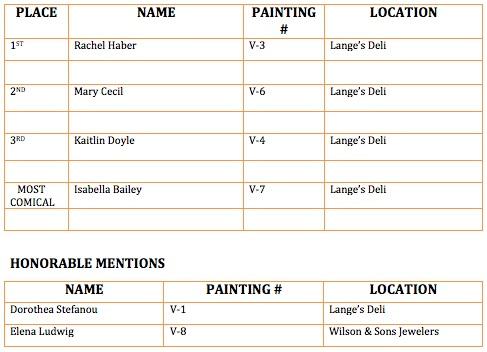


Group 6

Group 7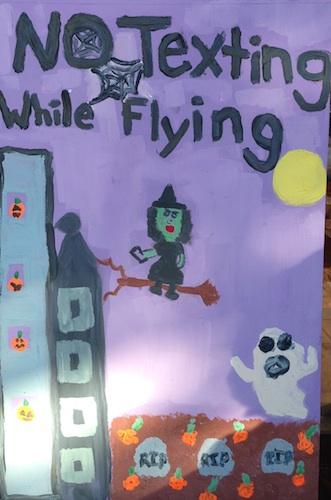
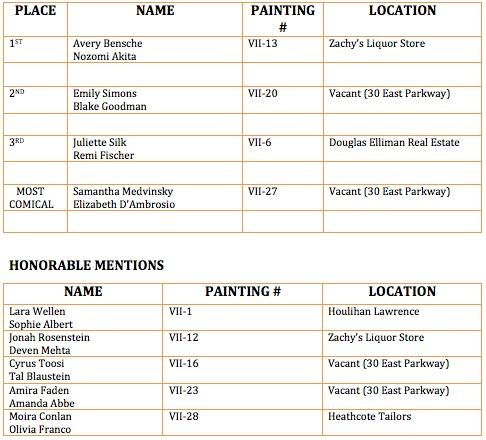
Group 8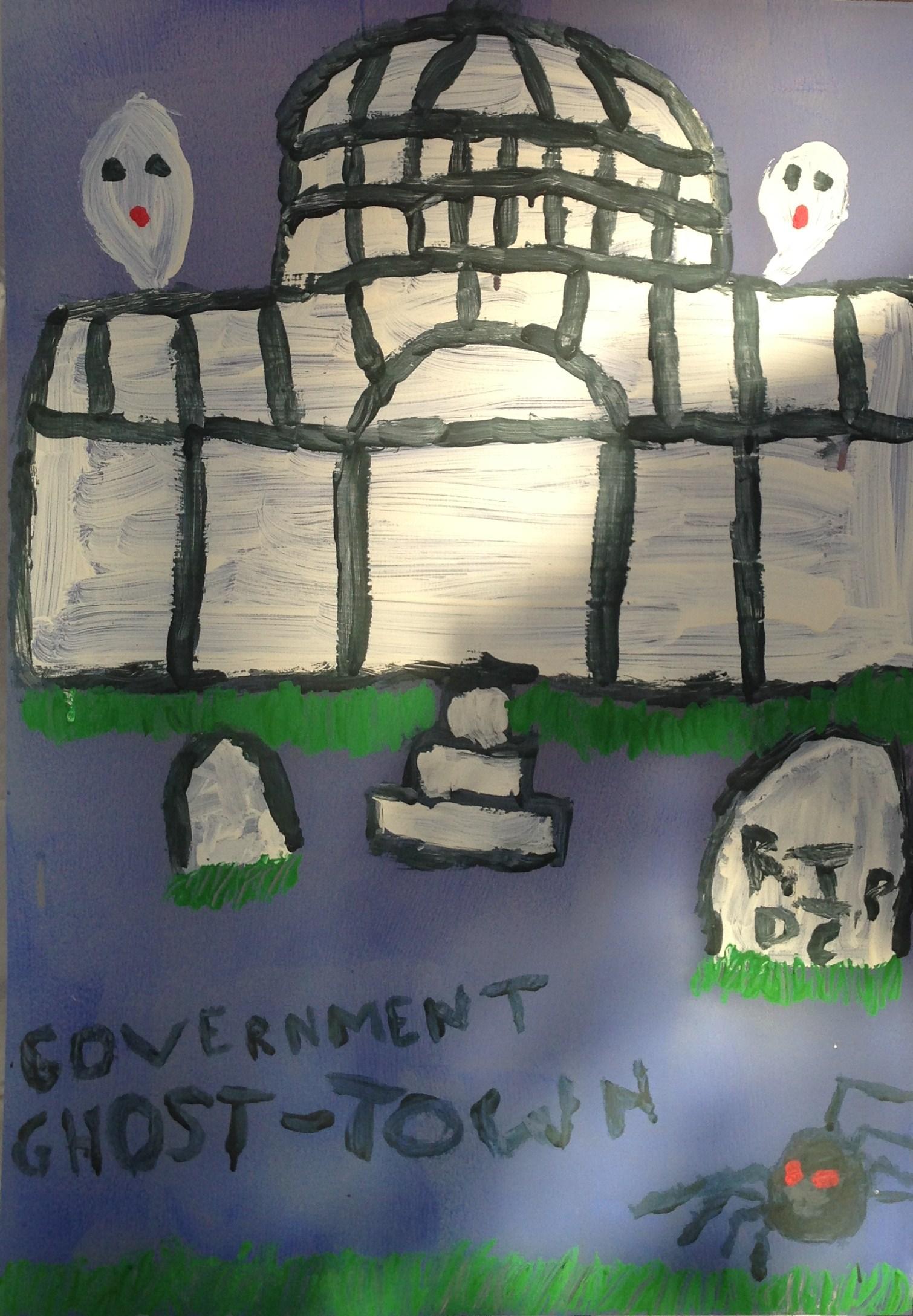
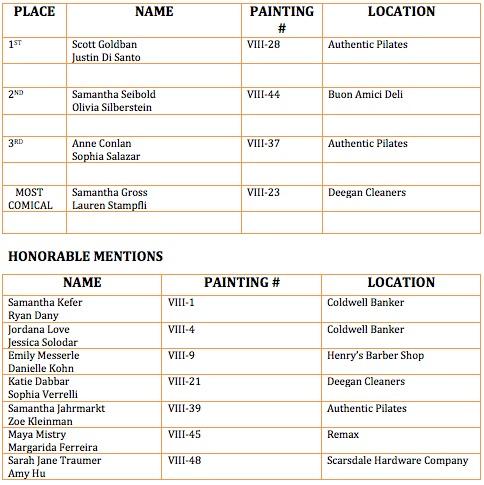

Group 9
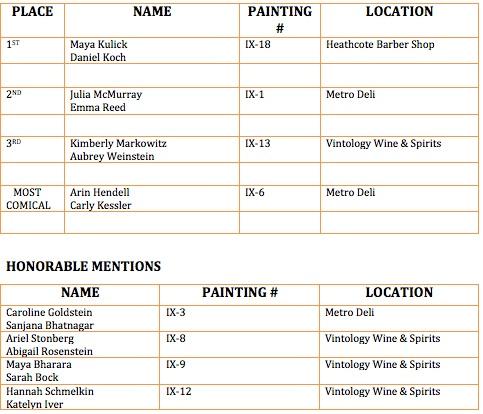

Group 10


Jennifer Vaughan Comes Home to Launch Physique 57
- Details
- Hits: 13530
 Jennifer Vaughan Maanavi has returned to her hometown, Scarsdale, to open Physique 57 at its first ever pop-up location in the Golden Horseshoe Shopping Center on Wilmot Road. Three signature Physique 57 classes are offered daily by Co-Founder Tanya Becker who is teaching in addition to Physique 57 instructors from the Manhattan location.
Jennifer Vaughan Maanavi has returned to her hometown, Scarsdale, to open Physique 57 at its first ever pop-up location in the Golden Horseshoe Shopping Center on Wilmot Road. Three signature Physique 57 classes are offered daily by Co-Founder Tanya Becker who is teaching in addition to Physique 57 instructors from the Manhattan location.
Jennifer grew up on Crossway and graduated from SHS in 1989. Her parents still live in her childhood home. Speaking about the opening of the studio she said, "It feels nostalgic to bring Physique 57 to Scarsdale. It has been fulfilling to watch our brand grow on a global scale and a pop-up in my hometown brings the expansion of Physique 57 full circle." Jennifer has fond memories of growing up here and said, ""From the Steffi Nossen School of Dance to Scarsdale High School cheerleading, this is where my love for dance and exercise was born and blossomed. To me, it is only fitting that Physique 57 launch in the place where my fitness journey began."
She originally discovered the Lotte Berk Method when she sought to rehabilitate an injured back and get back into shape while working long hours as a finance professional and MBA student in New York City. Soon she was addicted. Upon learning the only Lotte Berk Method studio in Manhattan was closing, Jennifer put her Columbia MBA to work and opened up an exercise studio to take over where Lotte Berk left off. She sought out Tanya Becker, one of the most adored instructors from her former studio, to act as her co-founder and build an updated and modernized version of the eponymous technique. Together they developed a new challenging and comprehensive exercise program that is now the basis for Physique 57's internationally renowned method.
Physique 57's Interval Overload format is a challenging, muscle-targeting workout that utilizes intervals of cardio, strength training, and stretching. By overloading muscles to their max, then immediately stretching afterwards, muscles are able to fully elongate after every workout, giving clients a long, lean beautiful body. Instructors are trained to teach the method to clients with varied levels and learning styles and continually evaluated to assure quality control. All instructors are dancers and therefore innately attuned to proper alignment, movement, execution and anatomy. This benefit allows for a safer and more effective class.
Check out Physique 57 in the Golden Horseshoe at 1142 Wilmot Road and view their class schedule here.
SHS Principal Reports Impressive Student Stats for Scarsdale
- Details
- Written by: Stacie M. Waldman
- Hits: 3756
 The Scarsdale School Board met at Edgewood School on October 7th and heard the first Educational Report of the school year from SHS Principal Kenneth Bonamo. Now serving his second year at the school, Bonamo gave a positive report on the state of the school, including updates on academics, teaching, extra-curriculars, guidance and college acceptances. Here are highlights of what he shared:
The Scarsdale School Board met at Edgewood School on October 7th and heard the first Educational Report of the school year from SHS Principal Kenneth Bonamo. Now serving his second year at the school, Bonamo gave a positive report on the state of the school, including updates on academics, teaching, extra-curriculars, guidance and college acceptances. Here are highlights of what he shared:
Staffing and Class Sizes: SHS has a high level of individualized in student academic support including a low student to teacher ratio of 11:1. Teaching quality has been described as the greatest influence of students' academic success, and class sizes help determine how much time a teacher can spend with each student. A class size in the low to mid-20s is the goal for all classes. Different academic levels of classes are offered ensuring that academic needs and abilities are met for all students.
Tutorial System: SHS has tutoring available for students. A survey was administered to 25% of student population (n=343) last spring. A total of 95% said teachers are readily available- 31% of students were tutored before school, 54% after school. Mr. Bonamo reported that 96% of students said tutorial time is helpful, whether to review for an upcoming exam or ask a question, and 98% take advantage of this support (18% often, 36% regularly, 34% sometimes, 10% rarely).
Student Support: SHS has 9 counselors/Deans that work with the same students during their four years at Scarsdale High School. They lead programs such as parent engagement seminars and help with the college application process. Consistent with peer schools, there are between 180-190 students allotted per Dean. There are also 2 staff psychologists, a school nurse, 2 academic support teachers, and 2 community outreach workers.
Professional Development: Mr. Bonamo defended the Scarsdale Teachers Institute and educational grants, stressing that investment in teachers' ongoing learning results in improved classroom education as well as increased enthusiasm for teaching. The Colorado River Project has been implemented in science classrooms and helps students learn creative and critical problem solving skills. The Math STI class has been cited as a program worth keeping, and interdisciplinary teaching is being encouraged when possible.
Innovations in Curriculum: Civic Education in 9th grade continues to help 9th graders transition to high school. Advanced Topics (AT) courses are offered at the High School level and provide advantages for students in college admission, prepare students for AP exams, and helps with national rankings. SHS has chosen an AT curriculum versus an AP curriculum in order to provide solid teaching and flexibility in the curriculum.
Administrative Support: SHS has 1 Principal and 3 Assistant Principals, on par with peer schools. The school spends $245 per student for materials such as textbooks and e-textbooks, SMART Board technology, wireless access within the school, etc. Extracurricular activities including drama, music, and athletics are offered. One third of students were on at least one team last year. Extracurricular activities increase students engagement in school, correlate positively with student achievement, and help them develop life skills. School safety and security has been enhanced and the feedback has been positive.
According to Bonamo, statistics demonstrate that the high school is turning out highly successful students. Here are the numbers:
- The class of 2013 had an average SAT score of 1937, the highest in the region (including lower Westchester and Nassau County). This average SAT score is consistent with scores over the last 5 years.
- 97% of students attended 4-year colleges from the 2013 graduating class. Among the class of 2014, 71 students (or 20%) were recognized as National Merit Scholars.
- Over the last 10 years, there was a 9-point increase (from 55% to 64%) in students accepted to the most competitive colleges.
- According to a survey of students that graduated in 2013, 68% felt better prepared for college as compared to their peers and 23% felt as prepared as their peers for college.
Reports from the other schools will follow at subsequent meetings.










